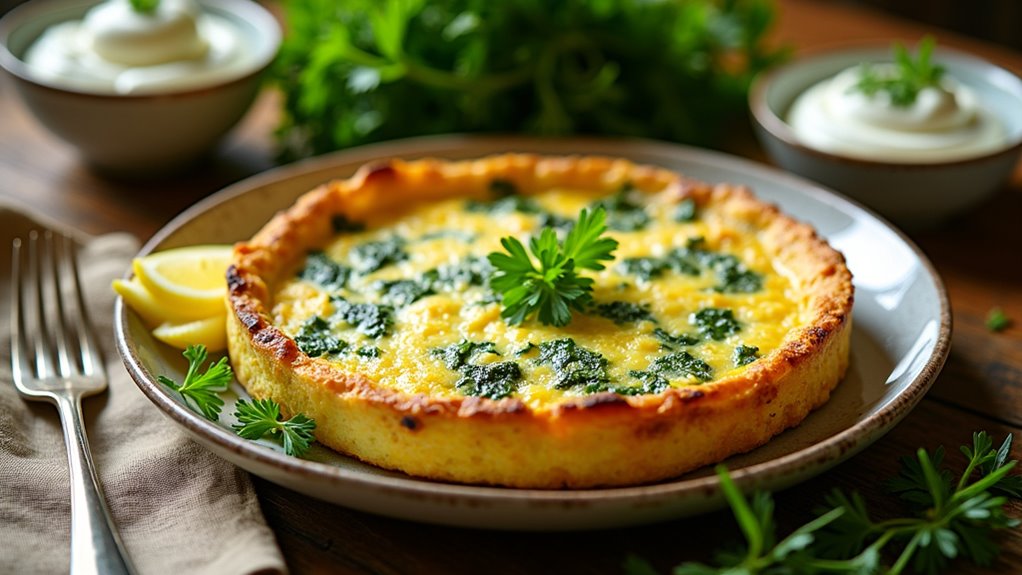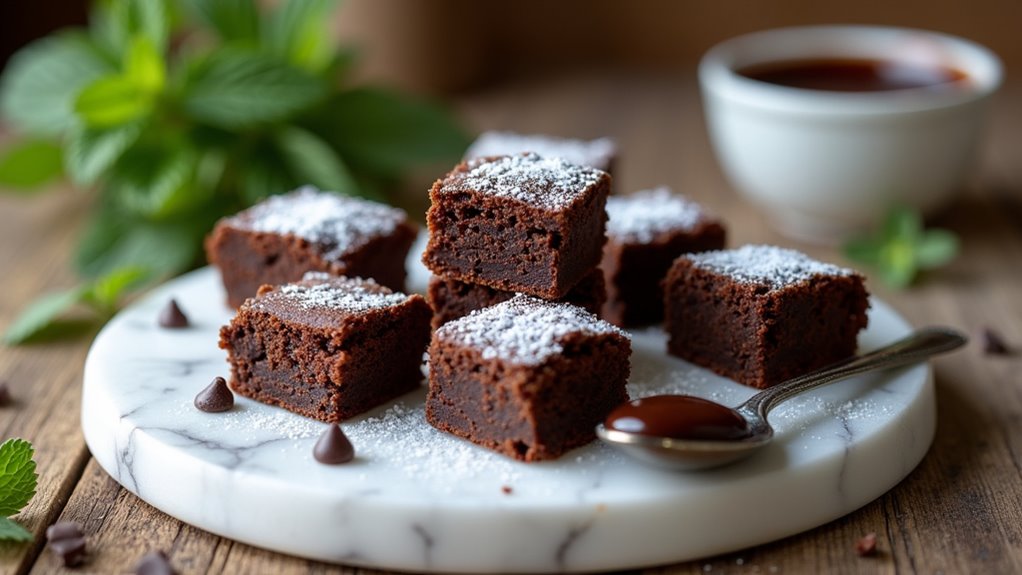A regular walked into my restaurant last weekend, eyebrows furrowed. “Marcus, I’m hosting brunch tomorrow and my quiche always falls flat!” I smiled, remembering my early kitchen disasters. “Try a frittata instead,” I suggested, scribbling down my artichoke and spinach recipe. She called Monday raving about how everyone demanded seconds. The beauty of this dish? It’s nearly impossible to mess up but looks like you spent hours perfecting it. Trust me on this one.
History & Origin
Originating in the rich culinary traditions of Italy, the frittata represents a remarkable testament to Mediterranean cooking‘s ingenuity.
Traced back to the 15th century, this traditional Italian cuisine showcases how eggs transform into a versatile dish. The word “frittata” derives from the Latin “frittare,” meaning to fry, which perfectly describes its cooking method.
Spinach and artichokes, ancient Mediterranean ingredients, gradually became integral to modern frittata recipes. As Italian cooking evolved, chefs incorporated regional cheeses and herbs, creating a dynamic recipe that bridges traditional techniques with contemporary flavor profiles.
This culinary journey demonstrates how simple ingredients can become extraordinary.
Recipe

A frittata is a delightful Italian egg-based dish that transforms simple ingredients into a sophisticated meal. This Spinach and Artichoke Frittata offers a perfect balance of flavors, combining the earthy richness of spinach with the tangy complexity of marinated artichoke hearts, all held together by a fluffy egg base.
The beauty of this recipe lies in its versatility and ease of preparation. By using minimal ingredients and a straightforward cooking method, home cooks can quickly create a nutritious and delicious meal that works equally well for breakfast, brunch, or a light dinner. The combination of cheeses adds depth, while the vegetables provide essential nutrients and vibrant color.
Ingredients
- 8 large eggs
- 1/2 cup marinated artichoke hearts, chopped
- 2 cups fresh spinach
- 1/2 cup grated Parmesan cheese
- 1/4 cup milk
- 2 tablespoons olive oil
- 1 teaspoon salt
- 1/2 teaspoon black pepper
- 1/4 cup crumbled feta cheese (optional)
Equipment
- 10-inch oven-safe skillet
- Whisk
- Mixing bowl
- Spatula
- Cutting board
- Knife
Instructions
- Preheat oven to 375°F
- Whisk eggs, milk, salt, and pepper in a mixing bowl
- Heat olive oil in a skillet over medium heat
- Sauté spinach until wilted
- Add chopped artichoke hearts
- Pour egg mixture over vegetables
- Sprinkle Parmesan and feta cheese on top
- Cook on stovetop for 3-4 minutes
- Transfer skillet to oven
- Bake for 15-20 minutes until set and golden
- Remove from oven and let rest for 5 minutes
- Slice and serve
Nutrition
400 kcal | 6g Carbohydrates | 17g Protein | 33g Fat | 12g Saturated Fat | 5g Polyunsaturated Fat | 14g Monounsaturated Fat | 380mg Cholesterol | 680mg Sodium | 420mg Potassium | 2100 Vitamin A IU | 8mg Vitamin C | 320mg Calcium | 3mg Iron
Cooking Tips
When preparing this frittata, ensure your skillet is oven-safe and choose fresh, high-quality ingredients for the best flavor. For a lighter version, you can substitute some whole eggs with egg whites, and experiment with different cheeses to customize the taste. Always let the frittata rest for a few minutes after baking to help it set and make slicing easier.
Serving Suggestions
Serving the artichoke and spinach frittata requires thoughtful presentation to elevate its culinary appeal. Serve the dish warm or at room temperature, drizzling extra-virgin olive oil over the top to enhance its rich flavors.
Garnish with fresh arugula lightly tossed in olive oil and sprinkled with flaky salt, creating a peppery contrast to the creamy frittata. Accompany the dish with a light mixed greens salad dressed in a zesty lemon vinaigrette to balance the frittata’s richness.
Offer crusty bread or toasted baguette slices on the side for added texture, and consider adding a bright side of fresh sliced tomatoes or a fruit salad to provide a refreshing counterpoint to the egg-based main dish.
Common Mistakes & Troubleshooting
When preparing a frittata, home cooks often struggle with achieving the perfect texture and preventing the bottom from burning. In my early cooking days, I once made the mistake of using too high heat, resulting in a burnt exterior and an undercooked center.
To avoid this, use medium-low heat and finish the top under the broiler for even cooking. Another common error is overmixing the eggs, which can lead to a tough, rubbery texture. Gently fold the ingredients and stop mixing once the eggs are just combined.
Additionally, ensure your skillet is oven-safe and properly greased to prevent sticking and facilitate easy serving.
Frequently Asked Questions
Do You Cook Spinach Before Putting in a Frittata?
Yes, I recommend cooking spinach before adding it to a frittata. It’ll reduce moisture, enhance flavor, and ensure a tender texture. Sauté it quickly with garlic in olive oil, and you’ll create a more delicious dish.
What Is the Main Difference Between a Frittata and an Omelette?
I’ll highlight the key difference: a frittata is an open-faced, slower-cooked egg dish mixed with ingredients throughout, while an omelette is quickly cooked, folded over fillings, and typically serves one person. They’re similar but distinctly prepared.
What Are 3 Main Differences Between a Frittata and a Quiche?
I’ll highlight three key differences: frittatas lack a pastry crust, are denser and thicker, and are cooked partially on the stovetop before finishing in the oven, unlike quiches which are fully baked in the oven with a creamy texture.
Are Spinach and Artichokes Good for You?
I’ll tell you, spinach and artichokes are nutrition powerhouses! They’re packed with vitamins, minerals, and fiber, supporting heart health, boosting immunity, and helping manage weight. You’ll definitely want to include these super-nutritious vegetables in your diet.
Final Thoughts
This artichoke and spinach frittata transforms simple ingredients into something extraordinary. It’s not just a meal, but a culinary experience connecting you with Italian cooking traditions. Whether cooking for family or entertaining friends, this dish delivers incredible flavor and nutrition.
Quick, healthy, and impressive—this frittata proves great food doesn’t require complex techniques. Master this recipe, and you’ll have a go-to dish for any occasion. The versatility allows for seasonal adaptations while maintaining its rustic charm.
Looking for a twist on this classic? Check out our delicious Brussels Sprouts and Bacon Frittata for a fresh take on this beloved frittata recipe!



